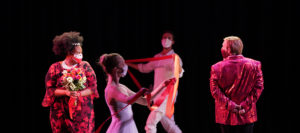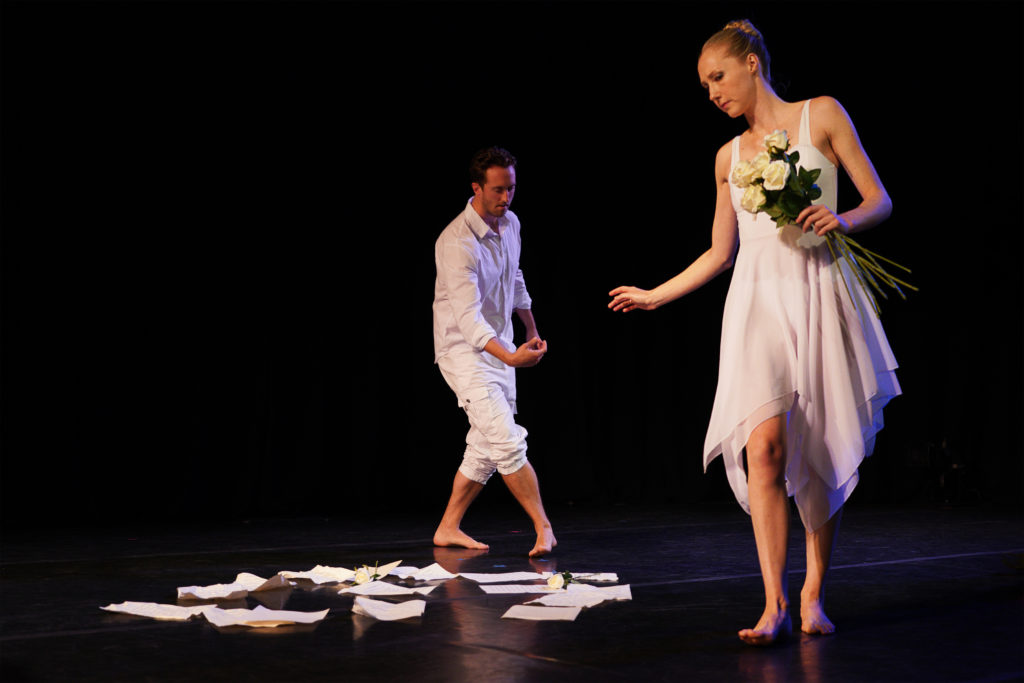
Los Angeles Opera 2020-21 Review: The Anonymous Lover
A Solid Digital Celebration of An Opera That Belongs in the Standard Repertory
By David SalazarOn Saturday, Nov. 14, 2020 the Los Angeles Opera gave the company premiere of Joseph Bologne’s “L’Amant Anonyme.”
As the opera world in the United States reckons with racial inequity throughout the industry (I can’t really speak for how European companies are approaching these challenges or if they are at all), Joseph Bologne, Chevalier de Saint-Georges has become a seminal figure in the discussion. A composer that was every bit the superstar in his day, he wrote many operas and performed regularly at the greatest halls at the time.
There was even a moment where he was considered for the top position at the Paris Opera, only for racist company members to demand that Queen Marie Antoinette prevent this from happening. Alas, after his death, the then-celebrated composer, who was also a hero of the French Revolution and a noted swordsman, was essentially banished from history. Of his numerous operas, only “L’Amant Anonyme” managed to stave off these ravishes of time.
LA Opera’s premiere is not the first time in modern history that the work is given a notable showcase. Conductor Marlon Daniel, a champion of the works of Bologne and the founder of the Festival International de Music Saint-Georges in Guadaloupe, actually gave the first modern-day performance in over 230 years back in 2016. He created a new score and parts for that premiere and then created an abridged concert version.
LA Opera, however, has opted for a different version, this one curated by Opera Ritrovata to be a “critical edition” of the work. And in presenting the opera for digital streaming, the opera has also turned to director Bruce A. Lemon Jr. to lead the way.
What has resulted is a notable performance that will hopefully be a harbinger of great things for a truly wonderful piece of operatic art.
Immaculate Structure
As we delve into the opera, Librettist Madame de Genlis deserves a lot of the spotlight here. A famed novelist, playwright, and educator in her time, Madame de Genlis weaves a story centering on the widow Léontine, who after being betrayed by her late husband, has no idea if she wants to engage with the pursuit of an anonymous lover (who happens to be her best friend Valcour who has yearned for her love for years). Instead of the male gaze that has defined opera for centuries, we get an opera from the perspective of a woman whose happiness comes from her own self-discovery.
The work charts Léontine’s battle with her pain of betrayal and her own desire to love again. By the end of the opera, Léontine comes to terms with her feelings and ultimately decides to act on them. She reveals her love for Valcour before he even reveals himself as the anonymous lover, thus undercutting any chance of the story devolving into the mystery man coming to save the woman from her torment.
The fact that she frames the story within the context of a wedding provides the work with the structural framework that gives Bologne the opportunity to weave his musical genius into the opera.
Bologne utilizes recurring themes and structures throughout with the music from the overture returning at the apex of the opera. The work features two ballets, each used during individual ceremonies, giving the opera a sturdy framework on which to build its central drama. And within that, Bologne’s continues this use of mirroring to great psychological effect. Take for example the first music sung in the first and second act – arias in minor keys emphasizing the pain of longing, first by Valcour and then by Léontine (for one another, albeit in different ways). This mirroring subconsciously emphasizes to the audience how matched emotionally the two lovers truly are. These arias are then followed by mirroring duets with Ophémon. Dorothée and Ophémon get single arias in Act one and two respectively, each singing about or expressing the feelings of their close friends. Meanwhile, the other lovers, Colin and Jeannette get a duet during their marriage scene in Act one that will mirror the duet between Valcour and Léontine in the second act.
The shift in ensemble sizes throughout gives the opera a sense of propulsion, which is conductor James Conlon’s ability to provide a strong sense of structure within the orchestra’s colors, particularly with the potent presence of the lower strings throughout. Just listen to the opening passage in Dorothée’s Act one aria with the rumbling bass motif and how the lower strings remain ever-present through the aria, adding to its sense of gravity even in the gentlest moments.

LOS ANGELES, CA. NOV. 10, 2020. LA Opera presents “The Anonymous Lover”, a chamber opera by Joseph Bologne, Chevalier de Saint-Georges at Coburn School’s Zipper Hall. The production is streamed in partnership with the Colburn School.(Photo Credit: Lawrence K. Ho)
Minimalism
Visually, Lemon Jr. was tasked with creating a production that not only worked for video, but also protected artists during a time where social distancing remains an essential duty. As such, singers were mostly separated in front of screens where they recorded their own sections individually. These were then edited together to create a cohesive whole. To complete this task, the backgrounds had to be minimal, focusing instead on varied lighting design (brilliantly produced by Pablo Santiago) to tell the story visually. In terms of editing, the production team employs all manner of transition and visual effects including dissolves, crossfades, superimpositions, animations, circular framing, split-screens, aspect ratio shifts, frames-within-frames. The minimalist approach to the set certainly allowed the costumes designed by Misty Ayres to fit into the abstract space; in many ways a minimalist production approach allows audiences to buy more into these more “traditional” costumes than anything other than a very strict and detailed set recreation of the time period at hand.
Arguably the most visually stimulating moments in the opera come from dancer Andrea Beasom’s choreography. The opera is essentially bookended by two ballets (one for each wedding ceremony), providing Beasom and Daniel Lindgren ample opportunity to become major characters in the story. More importantly, every time the dancers appear onscreen, the camera is suddenly freed from its stationary position to glide around the room with them. There’s always a sense of something new to discover in the choreography by Andrea Beasom. These moments also provide some of the film’s most poetic images, including white roses resting on top of a series of letters.
Another highlight comes at the end of the opera when the mystical red thread of love connects Valcour and Léontine, leading to all the artists engaged in dance onstage.
Tiffany Townsend portrayed Léontine as regal and potent throughout, her voice showing great dramatic range in her second Act aria, especially with much of her performance presented in silhouette. Despite not being able to fully see her face throughout, the intensity in her voice allowed you to connect with the desperation Léontine was feeling in these moments. It was a reminder that despite the expressive opportunities that film offers opera, the voice remains the king in this domain.
Tenor Robert Stahley showcased an elegant tenor in his opening aria, while Alaysha Fox delivered some fluid legato line in her Act one aria. Michael J. Hawk had a standout moment in his Act two aria, delivering Bologne’s soulful melody with warmth and elegance. Gabriela Flores and Jacob Ingbar were similarly solid in their Act one appearance. It also cannot go underappreciated that the editing put these singers together for the ensembles, but there is no doubt that singing their individual lines and recording them without the full ensemble experience must have been a huge challenge to overcome. The precision of the artists and video editing team is so spotless you might not even consider this separation at all.
This is an exciting project and one that will hopefully inspire other opera companies around the world to dig back into opera’s history and explore the repertory of often-neglected artists. I also hope that once we return to live performances, Bologne’s “L’Amant Anonyme” will be given its rightful place on international stages alongside the works of such masters like Mozart, Verdi, Wagner, Puccini, Donizetti, Rossini, Bellini, Strauss, and others. Right where it belongs.


